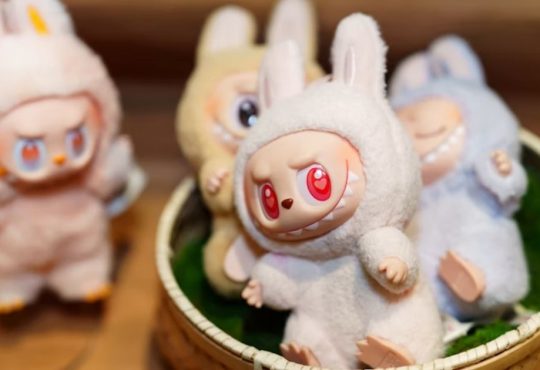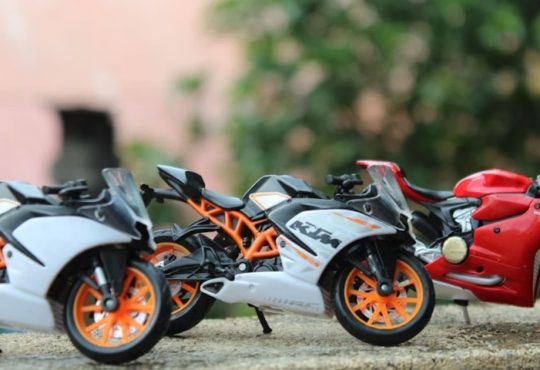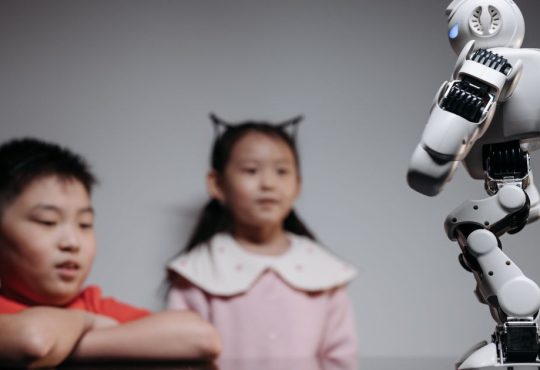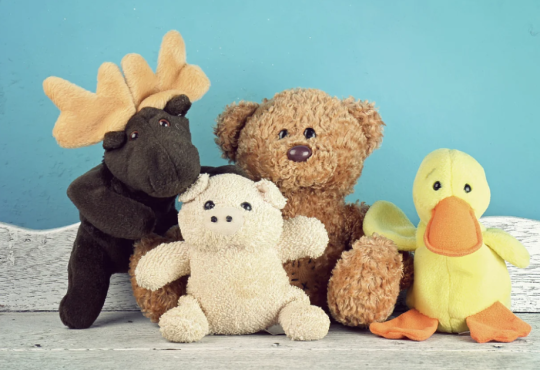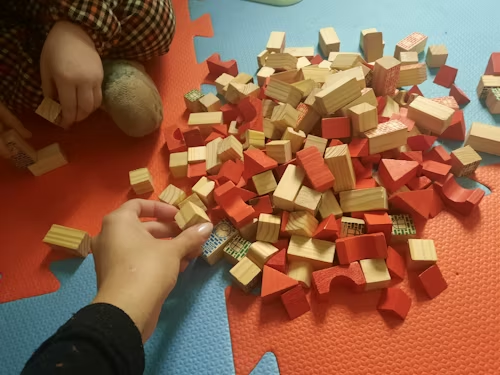
Toys are cherished companions in childhood, serving as delightful instruments of play and imagination, primarily enjoyed by children. Through playful interactions with toys, children revel in joy and amusement and engage in activities encouraging the growth of crucial abilities for their future endeavors. This article delves into the Overall Guide to Toys in 2024.
Overall Guide to Toys: Fascinating History of Toys in 2024!
History of Toys:
The history of toys is a fascinating journey that transcends time and civilizations, offering insights into human societies’ cultural, social, and developmental aspects. Archaeological excavations have unearthed a rich tapestry of toy artifacts dating back to prehistoric periods, highlighting humanity’s innate inclination towards playful activities. From rudimentary playthings crafted from natural materials like rocks and sticks to more sophisticated creations fashioned from clay or terracotta by ancient civilizations like the Greeks, toys have evolved alongside human ingenuity and creativity.
Ancient toys spanned various forms, catering to children’s varied interests and imaginations across different cultures. Miniature replicas of animals, dolls representing humans, and simple yet entertaining gadgets like yo-yos and spinning tops offered avenues for exploration, expression, and amusement. Beyond their recreational value, toys in antiquity also served symbolic and ceremonial purposes, with some cultures incorporating them into religious ceremonies or rites of passage. For instance, offering toys to deities in temples as children transitioned into adulthood underscores the sacred significance attributed to playthings in ancient societies.
Furthermore, the craftsmanship and ingenuity displayed in ancient toys reveal the extent of human creativity and problem-solving skills throughout history. Mechanical puzzles and intricate figurines provided entertainment and stimulated cognitive development and spatial reasoning abilities. The enduring legacy of these early toys speaks volumes about the timeless allure of play and its profound impact on human development and culture.
Marbles are among the most enduring and versatile toys throughout history. They are fashioned from rock, ceramic, or glass and employed in many games. With roots tracing back to 2500 BC, marbles have captured the imagination of diverse cultures worldwide, each with its own set of games and traditions surrounding these spherical objects.
In the annals of toy history, societies realized that toys played a pivotal role in fostering crucial skills in children, shaping their cognitive and physical development. Educational toys like the jigsaw puzzle were initially conceived to impart geographical knowledge to young learners. Similarly, rocking horses, a fixture in bygone eras, were ingeniously designed to aid children in mastering the art of balance, mirroring the experience of riding a real horse.
Beyond mere recreation, some toys assumed profound religious or cultural significance, like miniature wooden Noah’s Arks brimming with tiny animal figurines, emblematic of religious narratives and teachings. Moreover, outdoor play was encouraged through toys like kites and hoops, promoting physical activity and exploration of the natural world.
With technological advancements, toys evolved to incorporate intricate mechanisms, exemplified by the kaleidoscope, captivating young minds with its mesmerizing visual displays. As industrialization swept the globe, toy production transitioned from artisanal workshops to large-scale factories, heralding an era of mass-produced toys made from various materials, notably plastic. Today’s toy landscape boasts multiple options, from traditional wooden blocks to electronic gadgets, catering to diverse tastes and preferences in an ever-evolving industry.
Toy Categories Across History:
Toys have traversed diverse forms and functions throughout the ages, encompassing many categories. Among these are:
Dolls
Dolls, revered as timeless playmates, traverse through throughout history, throughout history, with origins tracing back to ancient civilizations. Crafted from cloth to porcelain materials, these miniature figures have evolved alongside human culture, assuming various forms and functions. From rudimentary clay effigies to intricately designed porcelain dolls, these creations have transcended mere playthings, often symbolizing cultural ideals or societal roles.
In contemporary times, dolls continue to captivate both children and collectors alike. While traditional baby dolls remain a staple, modern iterations incorporate cutting-edge technology, offering interactive features such as voice simulation and movement. Furthermore, the diversity in design caters to a wide range of preferences, with options spanning from classic baby dolls to fashion dolls with customizable attire. As such, dolls not only serve as sources of imaginative play but also as reflections of societal trends and technological advancements.
Plush Toys
Plush toys, synonymous with comfort and companionship, enchant children with soft textures and huggable forms. Crafted from plush fabric and stuffed with gentle materials, these toys offer a tactile experience that fosters a sense of security and warmth. Among the most iconic plush toys are Teddy Bears, cherished for their endearing resemblance to bears and adorned with button or bead eyes. Available in diverse shapes and sizes, these cuddly companions evoke nostalgia and affection, providing solace and amusement to children of all ages.
Beyond Teddy Bears, plush toys encompass a myriad of creatures, from fluffy rabbits to whimsical unicorns, each exuding its unique charm and appeal. These plush companions are confidants and playmates, igniting imaginations and accompanying children on countless adventures. With their inviting softness and delightful designs, plush toys stand as enduring symbols of childhood joy and companionship, offering solace and friendship in the form of cuddly companions.

Action Figures
Action figures, miniature embodiments of heroes and villains, captivate children’s imaginations with their dynamic poses and intricate details. Crafted from durable materials like plastic, these miniature figurines boast articulated joints, allowing many action-packed stances and poses. Often inspired by beloved characters from movies, television series, or comic books, action figures serve as gateways to immersive play worlds where epic battles and daring adventures unfold.
These intricately designed collectibles cater to various interests, featuring characters from iconic franchises spanning science fiction, fantasy, and superheroes. Whether reenacting thrilling scenes from favorite movies or creating imaginative narratives, children find endless entertainment and inspiration in the versatile realm of action figures. With their lifelike appearances and posable limbs, these pint-sized protagonists empower young minds to embark on imaginative journeys limited only by their creativity.
Toy Cars
Toy cars, a timeless classic in the play world, have evolved alongside transportation, captivating children’s fascination for generations. From humble beginnings mirroring the horse-drawn carriages of yesteryears, these miniature vehicles have become a staple in childhood play. Today, children delight in various toy automobiles, boats, airplanes, and helicopters, each meticulously crafted to ignite imaginations and fuel adventurous exploits.
Constructed from resilient materials such as plastic or metal, toy vehicles offer durability and realism, allowing young enthusiasts to explore various modes of transportation in the palm of their hands. Whether zooming through imaginary landscapes or constructing elaborate race tracks, these pint-sized conveyances inspire hours of imaginative play, fostering creativity and spatial awareness in budding young minds.
Puzzles
Puzzles, beloved by both children and adults alike, serve as engaging tools to challenge problem-solving abilities while nurturing crucial cognitive skills. Renowned for their ability to stimulate critical thinking and reasoning, puzzles offer myriad variations, each offering unique challenges and opportunities for mental growth. Among the most iconic puzzle toys stands the Rubik’s Cube, revered for its intricate design and compelling complexity.
Beyond the Rubik’s Cube, the world of puzzles expands into various forms, including mazes, sticks, pictures, locks, and sliding puzzles. Each variant presents challenges, encouraging individuals to employ logic, deduction, and patience to unravel the intricacies. From navigating labyrinthine paths to assembling fragmented images, puzzles offer diverse experiences that captivate minds of all ages, fostering a love for problem-solving and intellectual exploration.
Construction Toys
Construction toys, comprising numerous individual pieces that interlock to form intricate structures, encompass a wide range of creative possibilities, from buildings and vehicles to bridges and spaceships. Renowned for their versatility, construction toys captivate young minds and inspire imaginative exploration.
These toys facilitate the creation of diverse objects and foster the development of artistic and architectural skills in children. From simple wooden blocks to sophisticated plastic bricks, construction toys span a spectrum of materials and designs, offering endless opportunities for hands-on learning and creativity. Some sets even incorporate mechanical components like screws and bolts, adding an extra dimension of complexity and ingenuity to the construction process.
Outdoor Play
Many active toys tailored for dynamic engagement enhance outdoor play. From hoops and jump ropes to Frisbees and balls designed for sports like football, rounders, basketball, tennis, and cricket, these toys inspire physical activity and social interaction.
Encouraging children to engage in outdoor play and using active toys promotes exercise and teamwork, fostering holistic development. Whether participating in solo activities or group sports games, these toys facilitate physical fitness while nurturing essential social skills and cooperation.
Toys and Learning:
Toys are significant in children’s development, catalyzing personality growth and educational advancement. Toys encompass diverse functions crucial for holistic child development, from fostering creativity to refining physical and mental aptitudes.
Among the pivotal toys are those that inspire creativity and artistic expression, like building blocks and modeling clay. Often integrated into early education curricula, these toys provide children with avenues for imaginative exploration, nurturing their ability to innovate and communicate. Similarly, toys tailored for educational purposes, such as alphabet blocks and interactive puzzles, play a vital role in imparting foundational knowledge, from language acquisition to problem-solving skills. Moreover, toys serve as conduits for teaching broader social concepts, including cooperation, empathy, and understanding cause and effect, instilling invaluable life lessons during playtime.
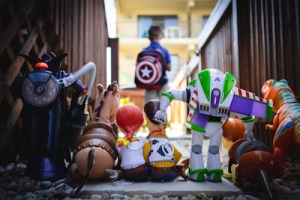
Toys and Gender Norms:
Throughout the evolution of toys, distinct gender norms have often dictated which toys are marketed toward boys versus girls. Traditionally associated with femininity, dolls have been predominantly marketed to girls, while toys like toy soldiers and cars have been sold to boys. These gendered distinctions in toy marketing reflect societal norms and expectations, shaping children’s perceptions of suitable playthings from an early age. However, recent research suggests that while boys tend to gravitate towards toys traditionally deemed masculine, girls exhibit a broader spectrum of toy preferences, encompassing both traditionally gendered and gender-neutral options.
In response to evolving societal attitudes towards gender and inclusivity, a growing movement has advocated for toy companies and retailers to promote toys suitable for all genders. This shift aims to challenge and dismantle gender stereotypes, encouraging children to explore diverse interests and play experiences free from societal constraints. Advocates strive to foster a more equitable and inclusive environment by promoting inclusivity in toy marketing and design. They aim to ensure that toys are marketed to all children, regardless of gender, fostering an empowering play environment. Here, children can freely express themselves and engage with toys based on personal preference rather than conforming to rigid gender norms.
Facts about Toys:
- The earliest toys in human history were likely simple objects like sticks or rocks, making it difficult to pinpoint the oldest toy.
- Surprisingly, the invention of plastic toys dates back to the 19th century, marking a significant advancement in toy manufacturing and design.
- It’s estimated that over five billion toys are scattered worldwide, a staggering number that highlights toys’ widespread popularity and ubiquity in society.
- Among the milestones in toy innovation was the first electric toy, the toy electric train, which showcased early experimentation with electricity in play.
- In mobility, the 1960s saw the first battery-operated toy car designed for children to ride, marking a significant leap in interactive and dynamic toy experiences.
Conclusion:
Toys, beloved pastimes among children, serve a dual role: They offer entertainment and valuable educational benefits. They are also practical tools for imparting crucial life skills, including problem-solving, which lay a strong foundation for their future endeavors.


